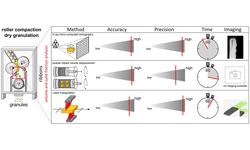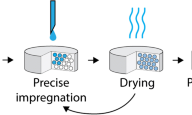Scientific papers
One of the formulation strategies employed to address chemical and physical incompatibility among various drug substances is the use of multilayer tablets. Feasibility studies on multilayer tablets commonly utilize round flat-faced punch tooling. However, the relationship between different tooling designs and the performance of multilayer tablets remains unclear. This study employs a prototype trilayer tablet and investigates considerations in tooling design during small-scale studies to assess the risk of interfacial defects. The study evaluates the impact of tablet weight and dimensions to comprehend the effects of scaling up or down tablet size. Factors in tooling selection, such as tablet shape, cup depth, and embossing size, are examined to gain insights into the influence of tooling design on the interfacial strength of trilayer tablets. Results indicate that tablet weight and dimensions can significantly influence interfacial strength due to their effects on force transmission during compression and the retardation force from the die wall during ejection. Round flat-faced tooling produces trilayer tablets with the strongest interfacial strength compared to typical commercial tablets with oval shapes and concave surfaces. These factors should be considered when using round flat compacts to evaluate the interface risks associated with multilayer tablets.
Comments
No comments posted yet.
Add a comment















